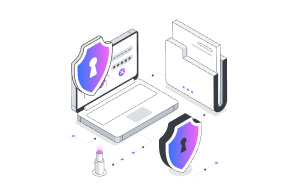Expose cyber threat
Desktop Application Penetration Testing
Qualysec can be your trusted partner in securing your desktop applications through deep penetration testing. We help you protect your sensitive data, prevent security breaches, and strengthen your business infrastructure.
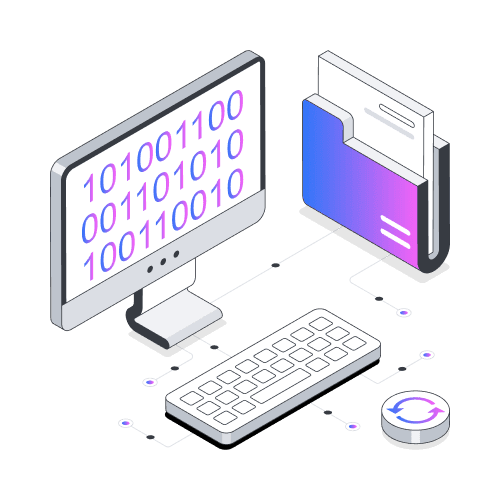
Fortune 100 to startup we secure them all







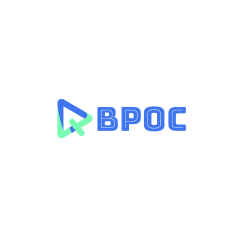




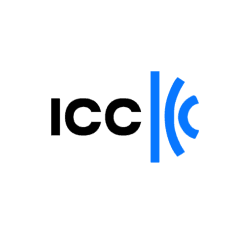



Expose cyber threat
Desktop Application Penetration Testing is the process of simulating real-world attacks on your desktop applications to identify security vulnerabilities, weaknesses, and potential risks. It aims to detect flaws that can be exploited by attackers, ensuring that your desktop software is protected against unauthorized access, data theft, and other cyber threats. By addressing these vulnerabilities, businesses can prevent future security incidents and maintain their reputation in a competitive market.
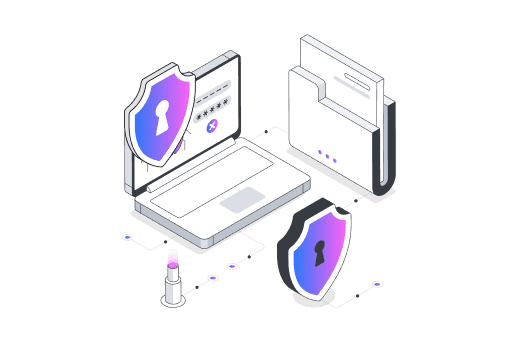
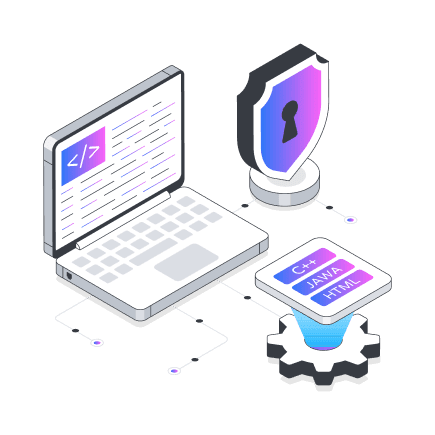
Vulnerabilities
Types Of Vulnerabilities Found During Desktop App Pentesting
Here are the key vulnerabilities found during desktop app pentesting

01
DLL Hijacking
02
Cryptographic Testing
03
Hardcoded Information in Source Code
04
Storage of Sensitive Information in Process Memory
05
Unencrypted DB Queries in Transit
06
Improper Logging of Activities
07
Lack of binary protection
08
Registry Misconfiguration
09
Authentication Testing
10
Information Disclosure
Process
Our Desktop Application Testing Process
At Qualysec, we protect your code with a thorough and structured testing process.

Define Scope
We collaborate closely with you to outline the test boundaries to identify critical assets and potential risk areas. This tailored approach ensures a focused and effective assessment.

Information Gathering
Then our experts carefully collect data on your web application, its architecture, and supporting infrastructure. This thorough investigation forms the foundation for a targeted testing strategy.

Enumeration
We systematically map out your application's attack surface and then identify potential vulnerabilities and weaknesses. This helps us expose entry points that attackers might exploit.

Attack and Penetration
Our skilled testers simulate real-world cyber attacks, ethically exploiting discovered vulnerabilities to assess their impact. This phase provides concrete evidence of security gaps.

Reporting
We deliver a comprehensive report detailing our findings, which includes vulnerability severity, potential impact, and clear remediation steps. Our actionable insights empower your team to strengthen defenses.

Remediation Testing
We don't just identify issues—we verify fixes. Our team conducts follow-up tests to ensure that implemented solutions effectively address the discovered vulnerabilities, giving you peace of mind.
Swagat Kumar Dash
Business Development Manager
“Connect with Swagat, Your trusted penetration testing advisor. Secure your assets. Reach out Today!”
Testimonials
What Our Clients Say About Us
Read what our clients say about our services. See how Qualysec has helped several businesses to keep their digital assets safe!

Very prompt with service and replies.Qualysec Technologies was incredibly prompt in both their service delivery and their replies. I was impressed by their efficiency and professionalism. Highly recommended
Rishi Verma

Our experience with Qualysec was excellent. The thoroughness of testing, the quick response time and their team’s availability to brainstorm any queries feedback made the entire process as smooth as possible
Mike Perry

Qualysec did a great job identifying vulnerabilities in our web and cloud applications and gave us clear steps to fix them. They stuck to deadlines, handled re-tests, and supported well.
Kenny Kim


The team delivered clear, concise reports, categorized by severity levels of vulnerabilities. Each report included detailed technical insights and executive summaries for all stakeholders.
Mitul Pansuriya


Qualysec delivered a seamless experience with excellent project management and clear communication. The team was responsive, met deadlines, adapted well, and offered great post-delivery support.
Billy Sadhu Sharma Kumar


The most impressive qualities of this company were their exceptional communication and the robust, detailed reports they generated, and providing thorough guidance on necessary remediations.
Jordan Rothstein


Everything went as planned, with deliveries always on time. The team was smooth to work with, and their speed of execution stood out, making the whole process efficient and seamless.
Manuel Agustin Napoli


The team demonstrated exceptional professionalism with their consistently short response times and strict adherence to the project schedule. Their professionalism was impressive.
Andreas Schriefl


Qualysec did a great job identifying vulnerabilities in our web and cloud applications and gave us clear steps to fix them. They stuck to deadlines, handled re-tests, and supported well.
Pragnesh Chauhan


I was impressed by the level of detail put into the reporting was very detailed, including what steps were done to produce the issue and what we needed to do to remedy the issue. Everything was very well detailed and impressive.
Thomas Jones


The team was highly professional and consistently met all deadlines. They went above and beyond by expanding the project scope to address unexpected issues—despite having no obligation to do so. A truly dependable and great team to work with.
Chad Galgay


Our experience with Qualysec was excellent. The thoroughness of testing, the quick response time and their team’s availability to brainstorm any queries / feedback made the entire process as smooth as possible.
Jazel Oommen Verma


Our experience with Qualysec was very positive. They offer excellent service, communicated clearly with us throughout the process, and were very accommodating regarding our timelines.
Mike Perry


Qualysec Technologies was incredibly prompt in both their service delivery and their replies. I was impressed by their efficiency and professionalism. Highly recommended.
Rishi Verma

Key Benefits
How Qualysec Strengthens Your Desktop Application Security
At Qualysec, we implement a range of specialized services to safeguard your desktop applications.
Enhanced Data Protection
Penetration testing helps identify vulnerabilities that could expose sensitive data. By securing data flows and storage, it safeguards against unauthorized access and breaches.
Prevention of Unauthorized Access
Testing simulates attacks to assess how well the app resists unauthorized access. This ensures stronger authentication and access control mechanisms.
Improved App Stability
Identifying potential security flaws during testing helps avoid crashes or system malfunctions caused by security breaches.
Compliance with Security Standards
Desktop app penetration testing ensures your application meets necessary regulatory standards like GDPR, HIPAA, or PCI-DSS.
Early Detection of Threats
Testing uncovers vulnerabilities before they can be exploited and allows teams to address security issues proactively and prevent future attacks.
Cost-Effective Security
By finding and fixing vulnerabilities early, desktop app penetration testing helps reduce the cost of potential breaches.
Free Downloads
Download Our Free Penetration Testing Resources and Reports
Access our free resource collection to empower your business with the knowledge to strengthen your security posture and maintain a secure lead.
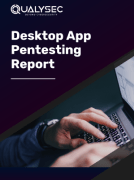
Desktop App Pentesting Report
A detailed document listing vulnerabilities, risks, and recommended fixes. It includes an executive summary and technical findings.

Desktop App Pentesting Methodology
A step-by-step breakdown of our testing process covers inspection, scanning, and other important phases of penetration testing.
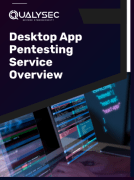
Desktop App Pentesting Service Overview
Summary of our approach, tools used, and scope of testing. The document outlines how we simulate real-world attacks to identify security gaps.
pricing
Desktop Application Penetration Testing Cost
Our Penetration Testing Service Pricing Could Save You Millions!



Process
Our Proven Process for Desktop Application Penetration Testing
Here is the dedicated process that we follow for every client before onboarding them and performing pentesting for their apps.
Contact us
Reach out to us and our friendly team will listen to your concerns and understand your unique security needs. Whether you prefer a call, email, or chat, we're ready to start your journey towards a more secure web app.
Pre-Assessment Form
We send you a simple pre-assessment form to fill up with the appropriate information. This helps us understand your app's architecture, current security measures, and specific concerns.
Proposal Meeting
After we review our findings from the pre-assessment and outline our proposed approach, we discuss security strategy and answer any questions you may have through either online or face-to-face meetings.
NDA and Agreement Signing
We get a clear Non-Disclosure Agreement signed by you to protect your sensitive information. We finalize our service agreement after you are completely satisfied. This helps us both know exactly what to expect from our partnership.
Pre-requisite Collection
We provide our clients with a checklist of everything we need to begin testing, such as access credentials and documentation. Our team assists and ensures a smooth start to your app's security enhancement journey.
Get a quote
Protect Your Desktop Applications Today
Qualysec ensures that your desktop applications are secure, compliant, and prepared to face evolving cyber threats. Partner with us to protect your crucial business systems and stay ahead of potential security challenges.
4+
Years in Business
600+
Assessment Completed
150+
Trusted Clients
21+
Countries Served
FAQ
Frequently Asked Questions
Get quick answers to common questions about API security testing, its benefits, frequency, costs, and more.
Why is desktop application penetration testing important for my business?
It helps protect sensitive data, prevents cyberattacks, and ensures your desktop application complies with industry standards. Regular testing also minimizes potential downtime and safeguards your company’s reputation.
How long does a desktop application penetration test take?
The duration depends on the size and complexity of the application. It may take anywhere from a few days to a couple of weeks to complete a thorough assessment.
What should I expect in a penetration testing report?
A detailed report will include identified vulnerabilities, the risks they pose, potential impact, and recommendations for remediation. We also categorize risks based on their severity levels to help prioritize fixes.
How often should I conduct desktop application penetration testing?
Penetration testing should be conducted at least once a year or after any significant updates or changes to your application. This ensures your application remains secure against evolving threats. What are the common vulnerabilities found in desktop applications? Common vulnerabilities include insecure data storage, improper session management, weak authentication mechanisms, outdated libraries, and privilege escalation flaws, among others.
Will penetration testing disrupt my application's normal operations?
No, the testing process is designed to be non-intrusive. Our experts conduct tests in a controlled environment to ensure that your application’s normal operations aren’t affected during testing.
Can Qualysec help us fix the vulnerabilities found during testing?
Yes, after identifying vulnerabilities, we provide detailed remediation advice and can work with your development team to implement fixes and re-test the application for assurance.



